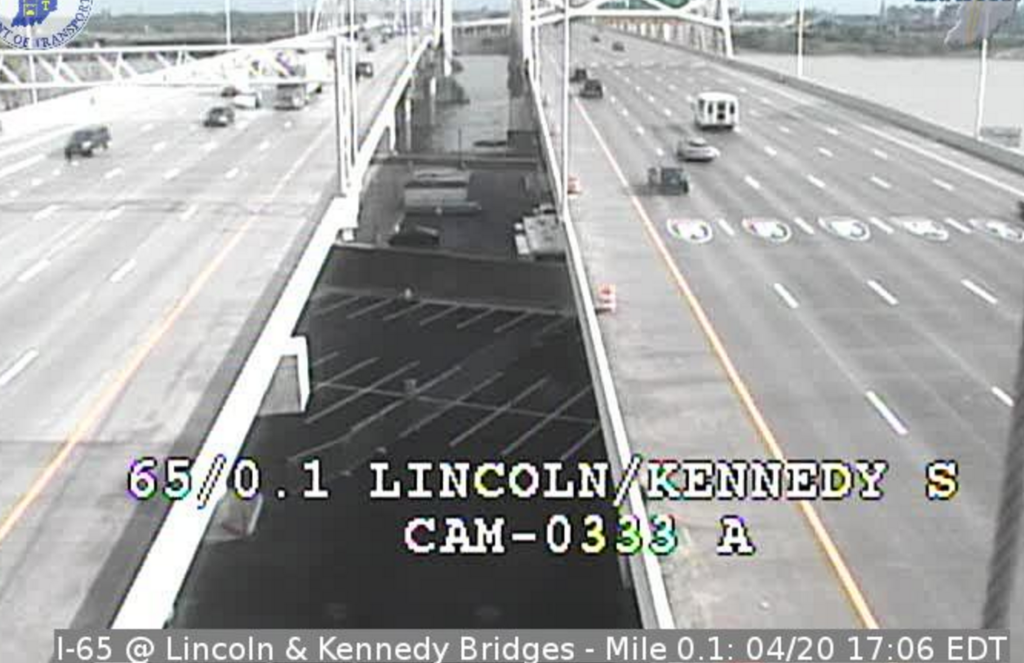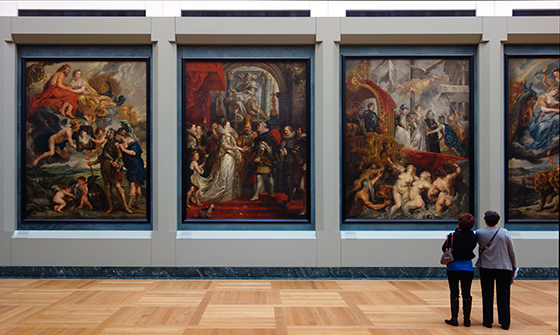What City Observatory did this week
1. The latest from the Louisville travel behavior experiment. Just before the New Year, Louisville started charging tolls to cross its newly-widened I-65 bridge. When it did, traffic across the bridge fell by almost half. Part of the reason was that motorists could take a very short detour and cross the Ohio River on an un-tolled Second Street Bridge. But that bridge was recently closed temporarily as part of the city’s annual Thunder over Louisville celebration. So, did the absence of a free crossing boost traffic on the tolled bridge? Traffic cam photos suggest that the toll bridge is still lightly used at peak hours. But photos are far from the best evidence, which would be actual traffic data. Unfortunately, Riverlink, the I-65 toll collectors, haven’t released any traffic data since the first month of tolling, so we don’t know how things are going. In related news, however, Kentucky did announce that it had signed a $300,000 contract for a consultant to determine whether toll revenues would be sufficient to repay the bonds issued to finance bridge construction, which may be a sign that that there’s some trouble in this river city.

2. The 0.1 Percent Solution: Inclusionary Zoning’s fatal scale problem. A new study from noted urban scholars Lance Freeman and Jenny Shuetz looks at the effectiveness of local policies to promote housing affordability. They take a close look at more than 50 inclusionary zoning programs in five different states and conclude that they’ve had an miniscule effect on housing supply, contributing less than 0.1 percent to the building stock, with an average of fewer than ten affordable units per year. Freeman and Schuetz argue that to address affordability local governments need to upzone widely to allow greater density and cut-back on regulations to lower development costs and encourage more supply.
3. Word of the day: Hagiometry. You know doubt already know about “hagiography”–works of art or literature that glorify a particular person (usually the person who commissioned the work). While old-school hagiography may no longer be in fashion, in our data-driven world, a new form of fawning portraiture has emerged, with all the flourishes and exaggerations that have been traditional in the genre. The key difference is that its flattery with numbers, rather than paint or words. We take a close look at some of the common flaws that underlie the economic impact studies that gin up impressive sounding numbers to help sell everything from ballparks to big box retail stores.

4. What does it mean to be a Smart City? The term “smart city” is all the rage, and in generally focuses heavily on technology, and how we might better exert control over systems from streetlights to water systems to traffic by instrumenting everything in sight. But in our view this highly centralized, engineering view of cities smacks of the kind of heavy-handed approach to cities exemplified by the master builder Robert Moses. In contrast, the real smarts, or intelligence of cities stems from their ability to bring people together, in a fashion better described by the work of Jane Jacobs. We shouldn’t be so enamored of technology that we forget that cities succeed because largely because they enable their residents to easily connect to one another in the urban environment.
Must read
1. How affordable housing lotteries work in practice. Inclusionary zoning programs require developers of new apartment buildings to rent out a portion of their units at below market rates. To qualify households have to have income that is in some target range (generally less than 80 percent or less than 60 percent of area median income) with rents pegged to their income level. Because rents are much cheaper than market, there are many more applicants for such housing than available units, so city’s conduct lotteries to allocate the units. City Living, describes how the process works in practice. They emphasize that there’s much more demand among the lowest income groups than moderate income groups (there are more than 1,000 applicants for each unit in two of the three lowest income categories, and as few as 15 applicants for each unit in the “highest” but still moderate income category. That’s hardly surprising: the higher your income the relatively less attractive the affordable unit is compared to market prices.
2. The high cost of starchitecture-London’s Garden Bridge edition. For the past several years, a new signature bridge has been in the offing for central London. Called the Garden Bridge, this pedestrian only structure would provide a landscaped path over the Thames. The design looks a bit like a freeway overpass with an overgrown hedge. The Happy Pontist, a bridge aficionado and critic writing in the UK chronicles the megaproject bloat that has engulfed the project. Originally proposed at a cost of about 60 million pounds in 2013, the project’s pricetag is now likely to exceed 2o0 million pounds–if the project goes forward. One of its leading proponents, former London Mayor Boris Johnson is out of office, and his successor is likely to be willing to write off sunk costs of 46 million pounds. And as the Happy Pontist notes, the problem is that the so-called “professionals” in architecture, transport and engineering who might have warned about the likely results of this folly did almost nothing to warn their clients or the public of the risks involved.

3. Why its important to tell the truth about economic change. Writing at Vox, Matt Yglesias challenges the notion that public discussions ought not to challenge the economic worldview of Trump voters. Denying the reality of fundamental economic change and offering up nostalgia as an economic strategy isn’t going to help us move forward. Neither the Appalachian coal industry, nor shuttered manufacturing plants like Lewiston Maine’s paper mill, will be revived. Economies don’t stand still, and they don’t go backwards. Ironically, the historical process of economic development in the US has always been about our willingness to embrace and thrive on change, building new industries, making large scale investments, migrating to opportunity, creating new homes and communities. Nostalgia isn’t an economic strategy, and indulging it is an obstacle to actually solving our economic problems.
New ideas
The economic disadvantages of being a suburban state. A new study published by the Philadelphia branch of the Federal Reserve Bank offers up an in-depth analysis of employment change in New Jersey over the past decade. By many traditional measures, including its high level of educational attainment, the Garden State should be well-positioned to compete in a knowledge-driven economy. But for the past 15 years, its economic performance has trailed that of the nation. The Fed study “Is Urban Cool Cooling New Jersey’s economy,” notes that New Jersey’s economy (which still has employment 2.2 percent below its pre-recession peak) has dramatically underperformed the urban centers of Philadelphia and New York. Essentially all of New Jersey is a suburb of one or the other of these two metropolitan areas, so the culprit seems to be the relative decline in the attractiveness of suburban locations. The Fed study includes a detailed shift share analysis which shows that New Jersey recorded much less job growth in urban-centered industries like finance and professional services, that drove national growth in the latest recovery. This is more evidence that national job growth is shifting away from suburbs and toward cities.
